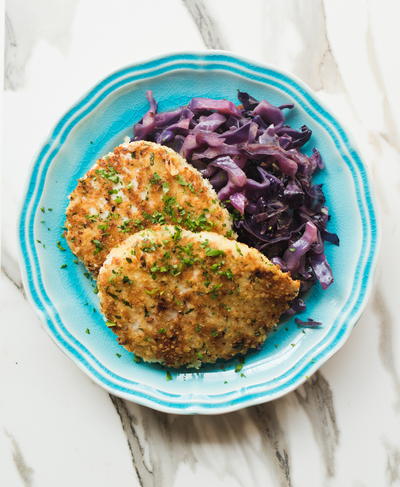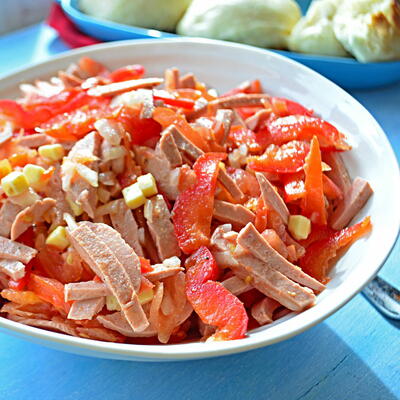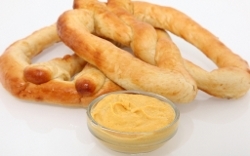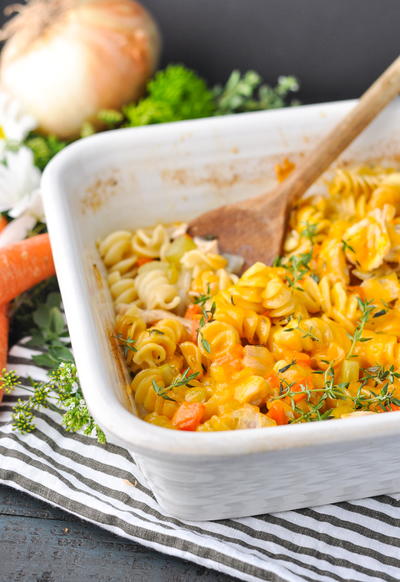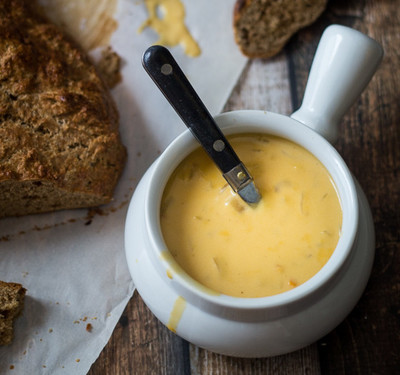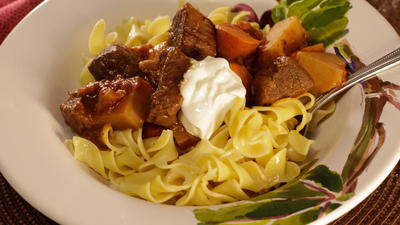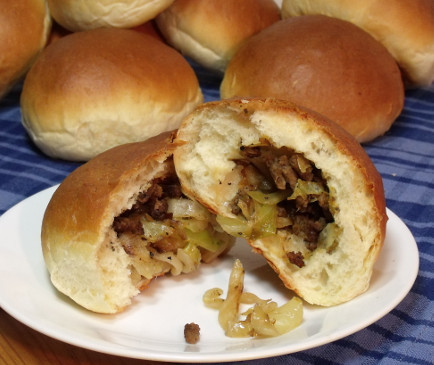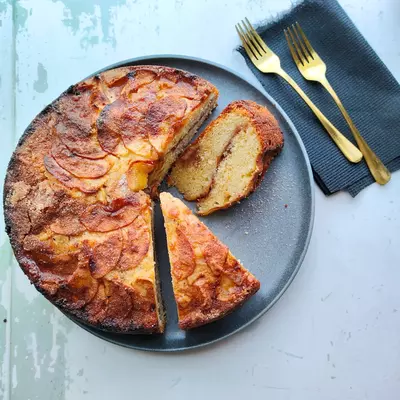Brotchen
Ingredients
- 1000 grams (about 2.2 pounds) flour
- 4 tsps salt
- 1 tsp sugar
- 1 package yeast
- 1/2 litre (about 2.2 cups) water (depending on the type of flour)
Instructions
For rye-rolls: 1 litre (about 4 cups) water 70 g (about 2 ounces) baking soda (up to 4 oz.) The flour should be mostly high-gluten, which gives the spongiest dough. It should be simple to use other substitutes (for example, all purpose, rye, or spelt) and perhaps to include rolled oats or sunflower seeds. It is also possible to include curry, herbs, or garlic. The amount of rye should not be too high if you use high gluten flour. Use a 1:5 ratio so that it does not go awry. Put the flour into a bowl. Use a spoon to create a hole in the middle, add the sugar, and then make a sponge by filling with (almost) all of the water and adding the yeast. Wait until the yeast is activated (foamy), and add the salt around the rim of the flour, being sure not to mix the salt into the yeast/water/flour mixture. After the yeast is activated, use a mixer to combine the ingredients and add flour or water as needed to form the dough. It is preferable to use less water so that you have a drier dough than it is to have a wet dough at the beginning of mixing. It all depends on what type of flour you use, and it takes a while, to make sure everything is mixed well. The longer the dough is kneaded, the better it will be ( you don't want to overwork the dough. Add sufficient water to make a flexible, but not sticky dough). After the dough is mixed, transfer to a bowl and cover with a cloth (ed. or plastic wrap) and rest for 20 to 30 minutes, which should give you time to start up your oven. The dough should increase in volume and become lighter ( and more moist) to the touch. The dough should finally be kneaded once again and divided into portions: 1 pound per sheet. You can either make flatbreads (simply roll out and flatten) or make rolls. To make rolls, make 12 rolls from 1 pound. Each roll should be placed on a clean and smooth working bench. You use the fingertips and ball of the hand to shape the bread, rolling the dough underneath your palm in inward circles. If the dough is too dry to form into balls, and instead slides across the countertop, carefully spray the work surface with water ( from an atomizer or spray bottle). The finished rolls or bread can be topped with poppy seed, sesame seed, oats, cheese, etc. Seeds and oats work best on the rolls if you steep them in water before coating them. Let the rolls rise another 50-60 minutes. Preheat the oven to 250 C (475F) and ( either spray the oven with the atomizer, or) put an oven-safe pan filled with water under the baking rack. The humidification causes the crust to become crispier. It takes about 30 minutes, but with cheese rolls you should check to make sure the cheese doesn't burn. As a variation, you may prepare a (7-15%) solution of baking soda: heat the water to boiling, add the soda and let it effervesce, then turn the range off. After the rolls are shaped, plunge them in the soda bath for about 30 seconds, pull them out with a spatula, and sprinkle them with pretzel salt. The proper consistency of the dough and other rules of thumb used in baking are taken for granted--the more experience you have, the better the results. Another tip, this time about yeast: Use fresh yeast, which doesn't really have a long shelf-life, although it is refrigeratable. To thaw fresh yeast, simply place it in a cup, cover with lukewarm water, and stir. Use fresh yeast in the same way you would use dried yeast.
Read Next30-Minute Cheesy German Soup

